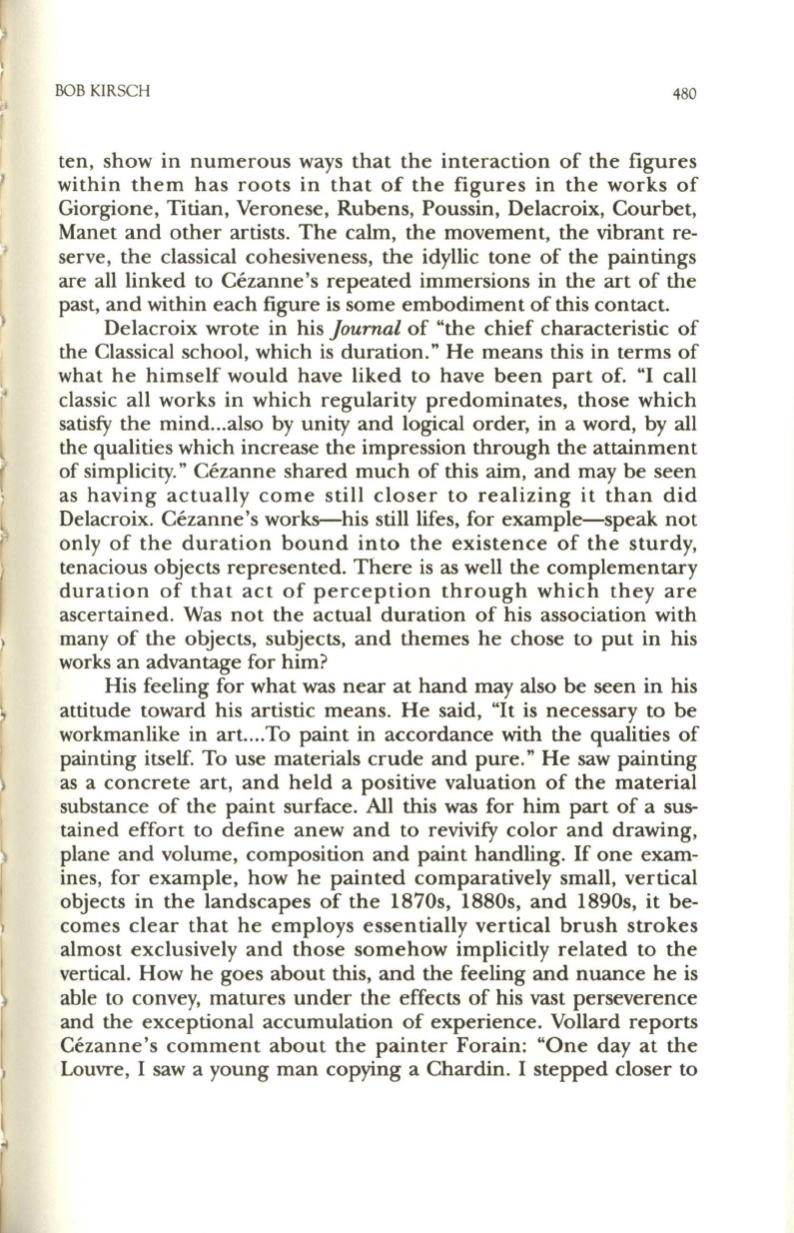
.,
BOB KIRSCH
480
ten, show in numerous ways that the interaction of the figures
within them has roots in that of the figures in the works of
Giorgione, Titian, Veronese, Rubens, Poussin, Delacroix, Courbet,
Manet and other artists. The calm, the movement, the vibrant re–
serve, the classical cohesiveness, the idyllic tone of the paintings
are all linked to Cezanne's repeated immersions in the art of the
past, and within each figure is some embodiment of this contact.
Delacroix wrote in his
journal
of "the chief characteristic of
the Classical school, which is duration." He means this in terms of
what he himself would have liked to have been part of. "I call
classic all works in which regularity predominates, those which
satisfy the mind...also by unity and logical order, in a word, by all
the qualities which increase the impression through the attainment
of simplicity." Cezanne shared much of this aim, and may be seen
as having actually come still closer to realizing it than did
Delacroix. Cezanne's works--his stilllifes, for example-speak not
only of the duration bound into the existence of the sturdy,
tenacious objects represented. There is as well the complementary
duration of that act of perception through which they are
ascertained. Was not the actual duration of his association with
many of the objects, subjects, and themes he chose to put in his
works an advantage for him?
His feeling for what was near at hand may also be seen in his
attitude toward his artistic means. He said, "It is necessary to be
workmanlike in art....To paint in accordance with the qualities of
painting itself. To use materials crude and pure." He saw painting
as a concrete art, and held a positive valuation of the material
substance of the paint surface. All this was for him part of a sus–
tained effort to define anew and to revivify color and drawing,
plane and volume, composition and paint handling.
If
one exam–
ines, for example, how he painted comparatively small, vertical
objects in the landscapes of the 1870s, 1880s, and 1890s, it be–
comes clear that he employs essentially vertical brush strokes
almost exclusively and those somehow implicitly related to the
vertical. How he goes about this, and the feeling and nuance he is
able to convey, matures under the effects of his vast perseverence
and the exceptional accumulation of experience. Vollard reports
Cezanne's comment about the painter Forain: "One day at the
Louvre, I saw a young man copying a Chardin. I stepped closer to


